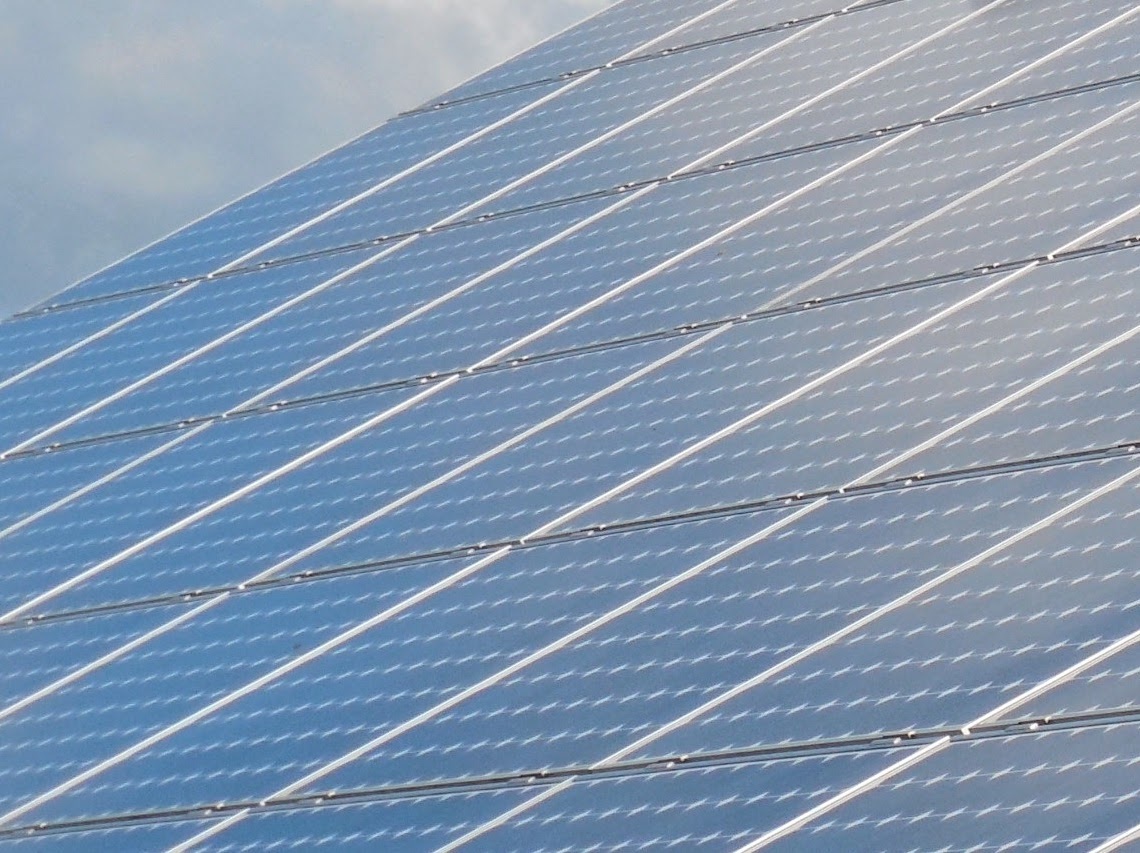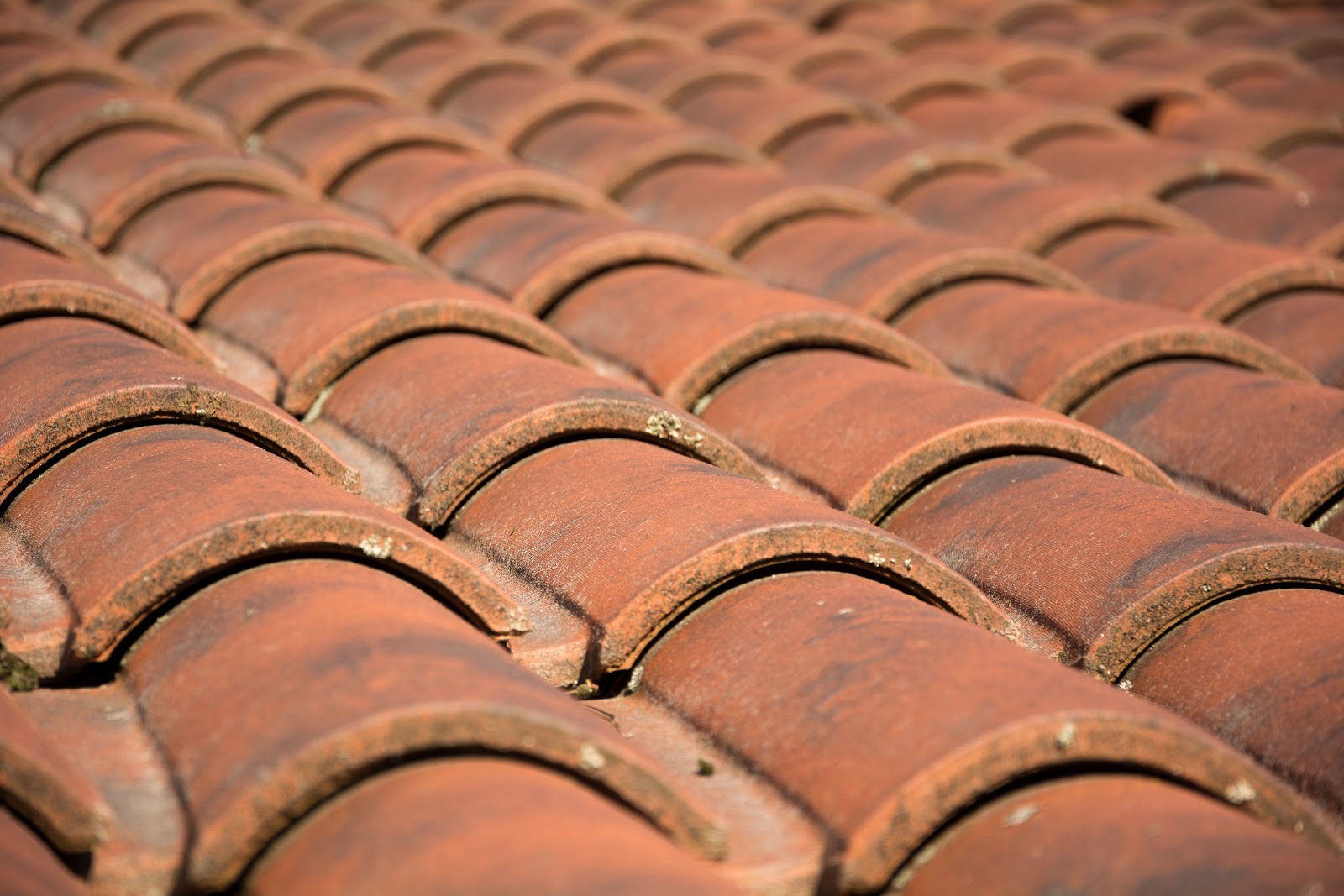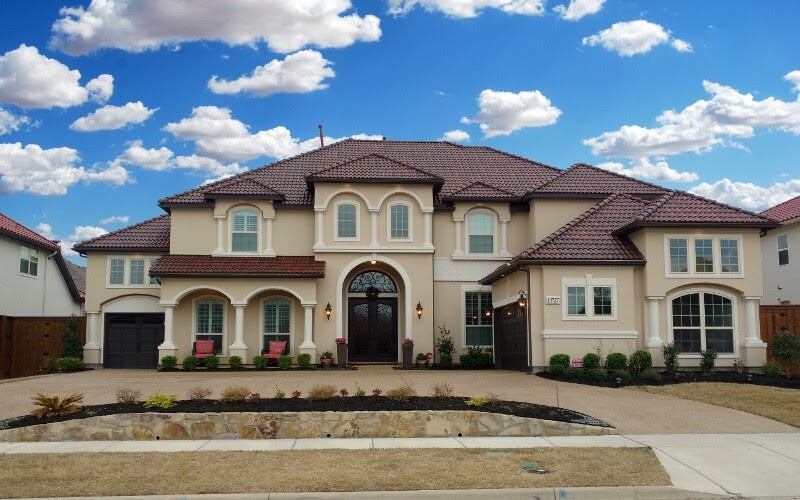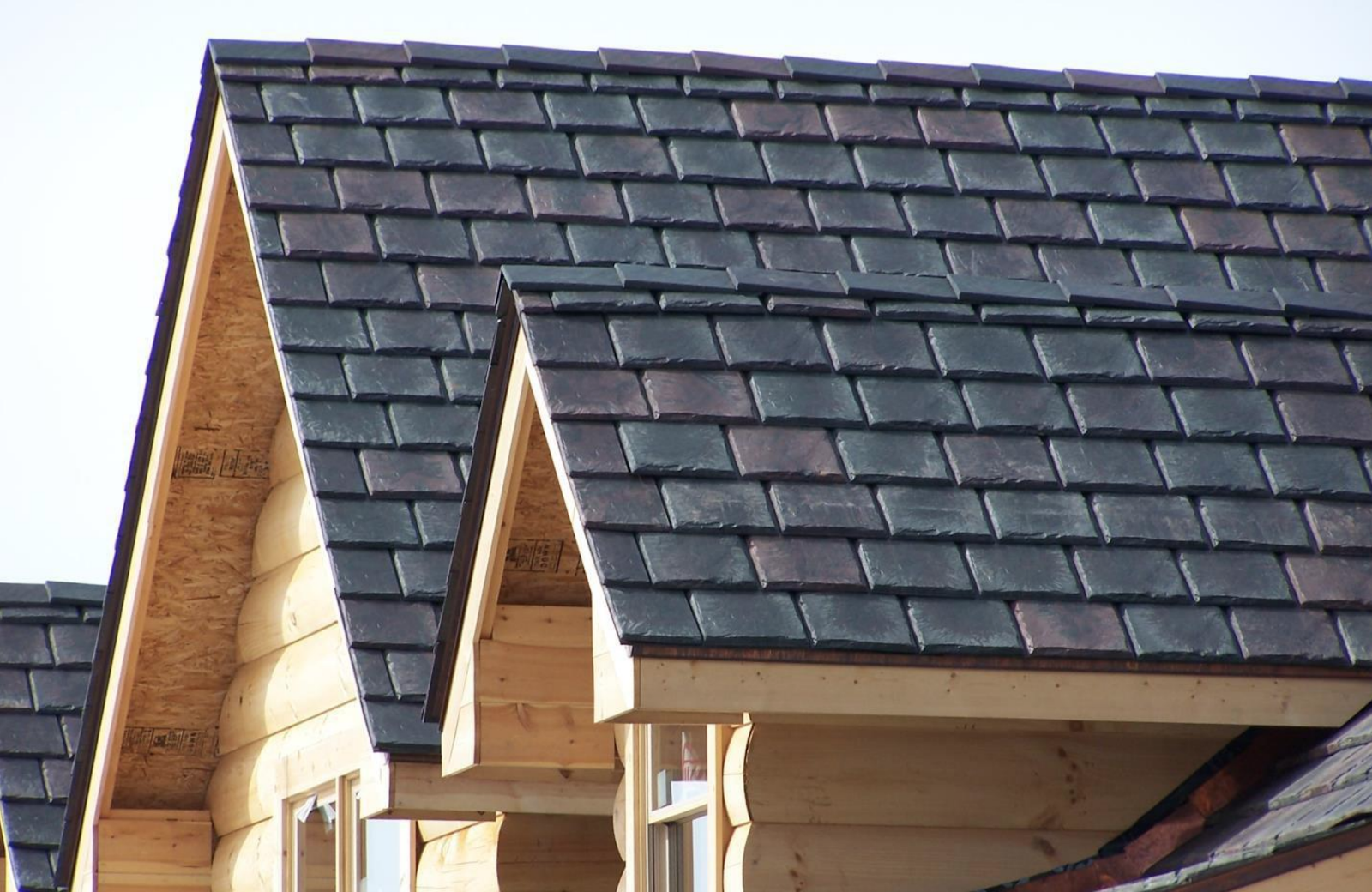Eco-friendly roofing shingles provide superior resistance to heat gains and losses, lowering a home's energy bills. They also ensure excellent durability, reducing costs for repairs and replacement. Choosing eco-friendly roofing materials requires you to consider many environmental factors. Additional significant considerations include the price, because roof shingles represent nearly 4 percent of the building costs for a new house and aesthetics, since the roof will dominate your home's exterior appearance.
What Makes a Roof Eco-Friendly?
Energy-Efficient
An eco-friendly roof contributes to the energy efficiency of a home by reducing heat gains and losses — important to know, because 10-15 percent of heat loss in a home occurs through the roof.
Durability
A durable, environmentally-friendly roofing material maintains its integrity throughout its expected life span against moisture, wind, fire, flying debris, snow, ice, and hail. A durable roof reduces the need for early replacement — lessening the drain on natural resources and the use of landfill space.
Embodied Energy
Embodied energy represents the total energy consumed to produce the roofing product: for example, mining, processing of natural resources, locally resourced materials, and energy consumption due to transportation and product delivery.
Recycling and Reusability
The manufacturing of eco-friendly roof tiles should utilize recycled products. Environmentally-friendly roofing should also aim for complete reusability to limit, if not eliminate, landfill waste.
Contribute to a Healthy Ecosystem
Eco-friendly roofing materials do not damage the ecosystem during their production or after their application to a roof system by releasing or emitting toxic chemicals.
11 Eco-Friendly Shingle Options
1. Cool (White) Roofs
Cool roofs, one of the fastest-growing segments of the roofing industry, consists of a mixture of white gravel and white glue. The mixture reflects the Sun’s rays, reducing the amount of heat that invades the house and decreasing the need for air conditioning, thereby reducing the demand for electricity produced by coal-fired power plants, which reduces emissions of toxic mercury, acid gases, and metals. However, cool roofs have a hefty installation cost. Also, cool roofs will only work in regions with significant amounts of sunlight and heat. In high temperature and humidity areas, mold can grow on the cool roof, potentially damaging the roof's appearance and integrity.
2. Solar Roofs

Solar roofing comes in several forms: solar panels and tiles. Solar panels require a proper and robust roof to sit on, while solar tiles have solar cells embedded into traditional roofing materials like shingles and metal. Solar roofing absorbs the Sun’s rays, converting the Sun’s natural energy into usable electricity. It is an eco-friendly roofing option that can tremendously cut down energy bills. Since they both rely on sunshine to generate energy, they do not contribute to air pollution. Unfortunately, the cost ($20,000) often deters homeowners from installing a solar roof — and it can take up to 20 years to cover the initial cost. Solar roofs also rely on sunlight, making it a viable roofing option only in areas that receive sufficient exposure.
3. Metal Roofs
Production of eco-friendly metal roofs from recycled (including other metal roofs) or new metal products creates a durable roof system that can last 50 years. As with cool roofs, metal roofs contain reflective properties that direct the Sun’s rays away from the home, reducing cooling costs, and therefore decreasing the emissions of toxins from coal-fired plants. However, several concerns make metal roofing less than eco-friendly:
- Metal production releases carbon dioxide (CO2) into the atmosphere. The additional CO2 absorbs sunlight and solar radiation from the Earth’s surface, causing temperatures to rise (global warming).
- Some metal roofs contain zinc or copper coatings. Trace amounts of these metals can wash off the roof and get into nearby water sources, negatively affecting aquatic life. Noisy metal roofs can quickly become damaged and dented during a severe wind event or hail storm, compromising the roof system's integrity and longevity. Without proper insulation, bare metal conducts heat, causing the metal roof to get overheated.
4. Living Roofs
Living roofs turn rooftops into actual gardens, offering homeowners a unique, eco-friendly roofing option. They also moderate the heat and clean the air in the area and reduce rainwater runoff. Living roofs are costly and require high maintenance. The home's substructure will also need additional (and expensive) support to handle the added weight.
5. Concrete Roof Shingles
Concrete roof shingles provide eco-friendly features:
- Inherent energy efficiency (concrete tiles reflect, not absorb sunlight).
- Sustainability through their recyclability and reusability.
- Concrete roofing's durability provides a long lifespan (reducing landfill usage).
Moreover, the composition of concrete tiles, formed under intense heat and pressure, includes all-natural, locally-sourced ingredients: cement, sand, water, and iron oxide pigments. The heavy weight of concrete tiles may require homeowners to add extra reinforcement to the house. Concrete tiles are fire-, wind, and impact-resistant, however, the brittle nature of concrete may cause it to break if walked on improperly. Some features of concrete roof shingles make them less than eco-friendly:
- Cement production releases high levels of CO2, a leading cause of global warming.
- Extracting aggregate can degrade landscapes.
- The admixtures in concrete require more assessment as to their potential impact on the environment.
6. Clay Roofs

Charming clay roofs offer several eco-friendly features. They reflect heat and provide insulation against both heat and cold, reducing energy use. Sturdy fire- and insect-resistant clay tiles also stand up to severe-strong winds, making them long-lasting. However, several issues prevent clay tiles from being considered an eco-friendly roof.
- High-maintenance clay tiles can crack if stepped on or hit by a flying branch. The tiles may also break or crack during rapid freezing and melting. Immediate repair is the only way to prevent the damage from compromising the roof's integrity, and significantly reducing the roof’s and structure’s lifespan.
- Extraction of clay from its natural habitats negatively affects the environment, resulting in air and water pollution, geoenvironmental disasters, soil erosion, loss of biodiversity, and economic wealth loss.
- Like slate and concrete, the weight of clay tiles often requires additional structural support so that the roof doesn’t collapse or bow, a further drain on resources and energy.
7. Faux Clay Barrel Tiles

Faux clay barrel tiles, like Brava’s barrel tiles, mimic clay tiles' beauty but offer a better eco-friendly alternative to natural clay iles. The durability of faux clay barrel tiles ensures a long lifespan, preserving natural resources and reducing landfill usage.
- Most faux clay tiles withstand freeze/thaw cycles and extreme heat, reducing the chance of early roof replacement.
- They have a Class 4 impact rating, resist hail, falling branches, and can withstand foot traffic.
- They resist unhealthy and damaging mold since they do not absorb water, protecting the roof and structure's integrity and longevity.
- Faux clay barrel roofs can last up to 50 years.
8. Cedar Wood Shakes

Beautiful, rustic cedar wood shakes have covered homes since Colonial times. Eco-friendly, cedar wood shakes provide natural insulation up to two times that of asphalt shingles, saving homeowners both energy and money. Manufacturers can use reclaimed and recycled wood to make wood shingles, further lengthening the life cycle of the wood shake. Unfortunately, several issues make cedar wood shakes less than eco-friendly. Transporting the shakes from the mill consumes a considerable amount of energy. In addition, durability problems with wood shakes make them costly and time-consuming to maintain, typically requiring replacement in just 15 to 20 years.
- If the wood's moisture level rises above 20 percent, damaging fungi can form, weakening the wood and leading to rot.
- Wood shakes naturally expand and contract from moisture exposure and temperature fluctuations, leading to small cracks on the shakes' surface.
- The fire-retardant applied to wood shake roofing will dissipate over time, making the structure susceptible to wind-driven sparks from a nearby fire.
- Over time, the Sun’s rays can dry out wood shakes, causing them to curl and cup, leading to moisture leaks and costly repairs.
- Pests, like squirrels and rats, can evade a home through missing and broken cedar shakes. Once inside the roof, these noisy pests will chew on wood (leading to costly repairs), electric wires (causing fire hazards), and the eavestrough (leading to water damage). Pests are known to carry odor and disease.
- Cedar wood shakes require a significant amount of costly maintenance to ensure their integrity and aesthetic value. Maintenance includes routine inspections, cleaning, treatments, restaining, and repair.
9. Faux Cedar Shakes

Authentic looking and beautiful synthetic cedar shake roofing is a superb, eco-friendly, more durable, and low-maintenance roofing option over cedar shake shingles. Faux cedar shakes, like Brava’s Cedar Shake, maintain their integrity during impact, fire, heavy winds, rain, snow, ice, and extreme temperatures — lasting up to 50 years.
- Faux cedar roofing has a Class 4 impact rating, making it resistant to hail, falling branches, and foot traffic.
- They have Class A fire ratings, the highest fire rating possible. Synthetic cedar roofing doesn't crack, warp, or chip when exposed to heavy winds, extreme heat, or freeze/thaw cycles — protecting the roof and building structure from water and pest damage.
- Synthetic cedar roofing also resists damage from mold because it does not absorb water.
- Synthetic cedar roofing tiles hold their integrity during extreme heat and freeze/thaw cycles.
- Faux cedar shakes from Brava are made entirely of recycled plastics (polymer) and other fully sustainable products, lessening building materials going to landfills. The recycled shakes also save the energy required to harvest trees for cedar shakes.
10. Slate Tile Roofing

Sturdy, fire-resistant slate tile roofing can last 100 years, a notable eco-friendly feature. However, a slate roof's longevity and performance depend entirely on proper installation by an experienced contractor. Some slate tiles receive a special coating that increases their energy-efficiency. However, several problems during extraction and installation make slate less than eco-friendly:
- The mining of slate pays a heavy toll on the environment. Extraction of slate involves drilling a series of 350-foot deept (107-meters) holes perpendicular to the slate slab, placing black powder into the holes, detonating the powder, and cautiously removing the slate slabs with an excavator— heavy trucks then transport the slabs to a manufacturing plant.
- Slate production produces a high level of waste.
- Slate's fragility makes it prone to breaking during and after installation, mainly if walked on, leading to costly maintenance and repairs. A cracked or broken slate tile will allow moisture into the roof and building structure, requiring further repairs and possibly compromising the house's lifespan.
11. Faux Slate Shingles

Faux slate shingles, like Brava Old World Slate provide the classic, attractive appeal of natural slate. Faux slate shingles are also a superb choice for an eco-friendly roofing option, composed only of recycled plastics (polymer) and other fully sustainable products.
- Lightweight faux slate shingles help lessen energy bills, reduce transportation (product delivery), and installation costs, compared to natural slate.
- The recycled shakes save the energy required to mine natural slate.
- Durable faux slate shingles reduce, if not eliminate, the energy-consuming and costly maintenance and repairs associated with natural slate. Long-lasting and faux slate roofing also lessens building materials going to landfills.
- Faux slate shingles have a Class 4 impact rating, resisting hail, falling branches, and foot traffic.
- Faux cedar shakes also have Class A fire ratings, the highest fire rating possible.
- Synthetic slate shingles don’t crack, warp, or chip when exposed to heavy winds, extreme heat, or freeze/thaw cycles — protecting the roof and building structure from water and pest damage.
- Synthetic slate shingles don’t absorb moisture, so they resist damage from mold.
Why Brava Synthetic Roofing Tiles Offer the Best Eco-Friendly Roofing Option
Brava's synthetic roofing tiles are reasonably priced, durable, and long-lasting, eco-friendly roofing options compared to other roofing materials with limited eco-friendly features.
Brava roofing tiles, manufactured entirely from recycled products, last decades with little need for maintenance and repairs, reducing landfill waste and preserving precious natural resources. Our 50-year warranty guarantees that our roofing tiles won't dent, split, crack, or deteriorate from flying debris, hail, UV-rays, or snowstorms — and will protect your home’s roof from water and pest damage, preserving its long-term integrity.
Brava composite tiles do not absorb water, therefore they resist damage from mold. Brava roofing tiles maintain their integrity during extreme heat and freeze/thaw cycles and are available with Class A and Class C fire ratings.
Brava Spanish, Class C has high reflectivity, keeping heat from entering the building — the only composite Spanish tile 3rd-party tested, and Miami-Dade County approved.
Brava’s roofing tiles save the energy used to mine slate, extract clay, or harvest trees.
Contact Brava Roof Tile for more information on eco-friendly roofing options.



